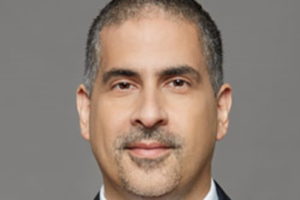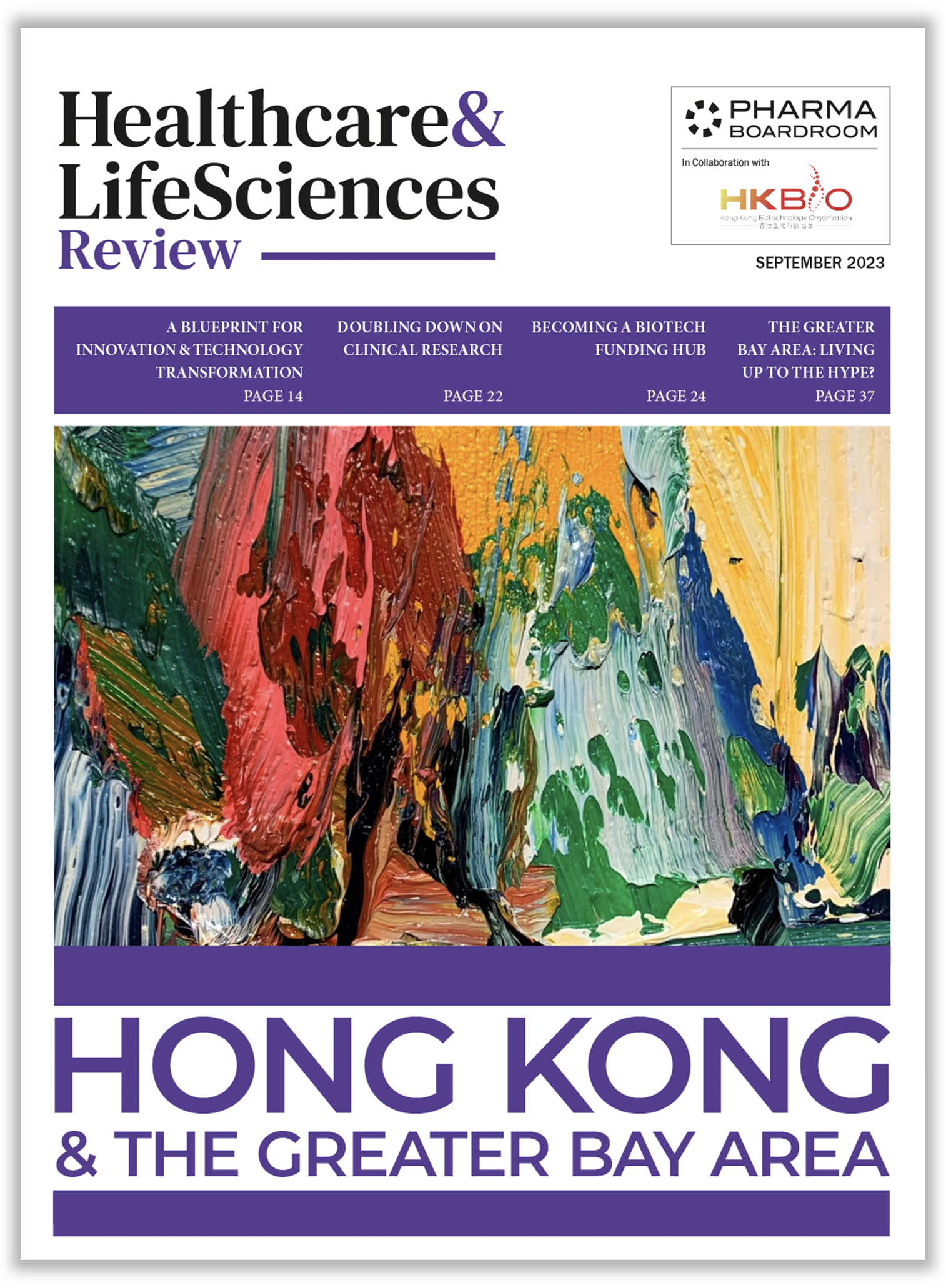ASLAN Pharmaceuticals is a clinical-stage immunology-focused biopharmaceutical company. CEO Dr Carl Firth reveals why the company has shifted its focus from oncology to autoimmune diseases. He explains why their lead asset has the potential to compete with Sanofi’s blockbuster Dupixent and why ASLAN decided to delist from the Taiwan Stock Exchange in favour of NASDAQ.
PharmaBoardroom has interviewed you before, in Taiwan and Singapore, but can you begin by reacquainting our audience with ASLAN and its business model?
The company has evolved since then, continuing to build its portfolio. Today, our focus is very much on immunology and autoimmune disease. We are trying to create value through our clinical pipeline by focusing on innovative assets and drugs that potentially could transform patient lives, addressing areas of significant unmet need. Our portfolio has been built primarily by acquiring assets from other companies at a relatively early stage. We then take those drugs and add value by taking them through clinical development.
The company has been around since 2010. What has changed and what has shifted in those 11 years of history?
We started the company by looking at both immunology and oncology. Indeed, one of our earlier assets was an oncology asset drug called varlitinib. Unfortunately, as is sometimes the case in our industry, the drug failed in a clinical study and we decided to shift the resources to other parts of our pipeline.
Now, we are focusing on another asset, ASLAN004, which we are developing for atopic dermatitis. It is an area that is attracting a lot of attention from the industry in immunology. Beyond atopic dermatitis, but we are also starting to look at other indications like asthma, nasal polyps, COPD, etc.
Considering oncology is a highly competitive field, did you look at immunology and autoimmune diseases as a blue ocean to explore?
All areas of unmet need are worth exploring. We love to talk about cures for cancer, but of course, that really does not exist except for a very small number of cancers.
But when we look at the immunology field, and you look at certain areas like atopic dermatitis, it’s really interesting to see how the launch of new products has brought about a recognition of the unmet need that exists.
Rheumatoid arthritis, for instance, was not considered a big opportunity 25 years ago. And then, with the launch of the TNF alpha antibodies and injectables, people recognized that there was a huge unmet need. Psoriasis had a similar transformation, which occurred around ten years ago. And now we are going through exactly the same thing in atopic dermatitis. Today, there is one biologic in the market called Dupixent, which is doing well. But we believe there’s room for improvement. Our drug candidate is currently in phase 1 we expect to move into a phase 2b program towards the summer. That program will probably take us between 12 to 15 months to run. We hope to be in phase 3 sometime late next year.
Even though our lead asset’s focus is atopic dermatitis, we know this mechanism is relevant in a number of other disease areas. Sanofi’s Dupixent, for instance, is approved in several indications, including asthma and nasal polyps, as well as esophagitis. It is also in phase 3 development for 11 or 12 other indications. We are going after the same pathway, so we would expect our drug to also be relevant in the same indications.
We also have another molecule that we’re developing, which is ready to move into phase 2. We are also looking to develop it in a range of autoimmune indications. And again, because of the mechanism, it has a potential to be used in a number of different disease areas. We expect to say more on this later in the year.
Can you explain the logic behind the decision to delist from the Taiwan Stock Exchange and list on NASDAQ? Does it mean that you are pivoting to the US market?
There were a couple of different sides to it. From a portfolio perspective, I think there’s certainly been a shift towards a more global footprint and maybe a slightly more US-centric one. That is because many years ago we were developing assets in oncology and looking at tumours prevalent in Asia. Now we are looking at the immunology, autoimmune space and these are global diseases. Of course, there are patients in Asia, but the US market is still the largest one. Many late-phase studies will need to be conducted in the US, of course complemented by other countries. From a footprint perspective, we are expanding our team there, as well. I think that shift will continue.
From a capital market perspective, we saw an opportunity to list our company in Taiwan because it had a vibrant capital market for biotechnology companies. Shortly after we did that, the US market opened up and we opted to do an IPO there as well. The US has the deepest and most knowledgeable investor base. We felt that we were much more amongst our peers in the US, they are the top biotech innovators of the world. And, increasingly, our investor base was shifting there.
Moreover, the regulatory environment in Taiwan makes it challenging for biotech companies. It is set up for manufacturing companies, engineering companies, companies with stable revenue.
To what extent does it make sense to still be based in Singapore if you are a global company with a pipeline of assets that are relevant all around the world?
That is a good question. I expect we will continue to have a base in Singapore. There are reasons why you want to conduct some clinical development work in Asia. And of course, Singapore is a good place to have your base. But beyond that, I do think the centre of gravity of the company will shift to the US. That’s why we made a senior hire last year, Dr Kenneth Kobayashi, who has experience in atopic dermatitis and drug development. He is leading our US team and we are in the process of making other senior hires under him.
A big part of that is to prepare for the phase 2b program, which will be a relatively large clinical program.
What have been the implications of the COVID-19 pandemic to the company’s operations and clinical studies?
To a certain extent, it is amazing how we have been able to function in a very effective way despite having to conduct so much of our interactions through electronic means. However, the longer this goes on, the more challenging it will get, and the more challenging it will be to build new relationships. It has also had implications for the clinical studies. At the time it began here, around March 2020, we were running a clinical study in Singapore and we had to stop it for two months because of the COVID restrictions. We understood that there was too much risk in being dependent on just one jurisdiction, so we immediately started looking to open sites in other geographies. We added another 7 sites in Australia and the US.
Particularly in early-stage clinical trials, there has to be a lot of interaction between patients and physicians and a very close monitoring assessment. But then when you get into longer studies, there can be monitoring and assessments that could be done remotely. COVID-19 has certainly accelerated the way that we and the industry embrace some of the newer technologies that allow us to conduct studies in this environment.
What are your goals for the midterm future of ASLAN? What do you hope to achieve?
It is great to advance a drug, but ultimately it is all about getting drugs to patients in need. My goal has always been launching a drug that can make a difference to patients. But it is a long path – hopefully one of our drugs will make it to market in the next four or five years.
That will be a great achievement and something that would be great to see, whether it is done in conjunction with a partner or not.
What kind of partner are you looking for?
It depends on which drug space we are looking at. If you think about atopic dermatitis, there is a recognition now that this is a disease with a very high incidence and large number of patients around the world; you see both adult populations and paediatric populations. Sanofi is currently positioning Dupixent and has been successful, and there is also Eli Lilly with their acquisition of Demira. It will continue to get competitive. The challenge will be competing in that environment, educating doctors, helping people understand the benefits of the drug. Big pharma are often best placed to do that.
What is your advice for biotech entrepreneurs to build a successful business?
There are lots of different ways of becoming a biotech entrepreneur, you can come from a scientific background, a clinical background, or a business background. But you don’t need to be an expert in all three, very few people are, the important part is understanding where your weaknesses are. You have to surround yourself with people who can fill in the gaps. And I think the greatest factor in determining success is a recognition of your own limitations.







